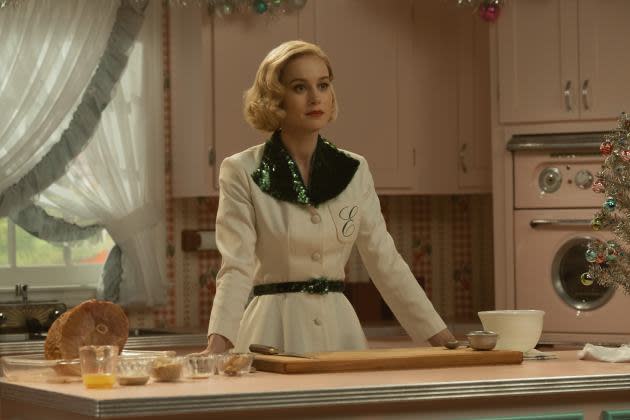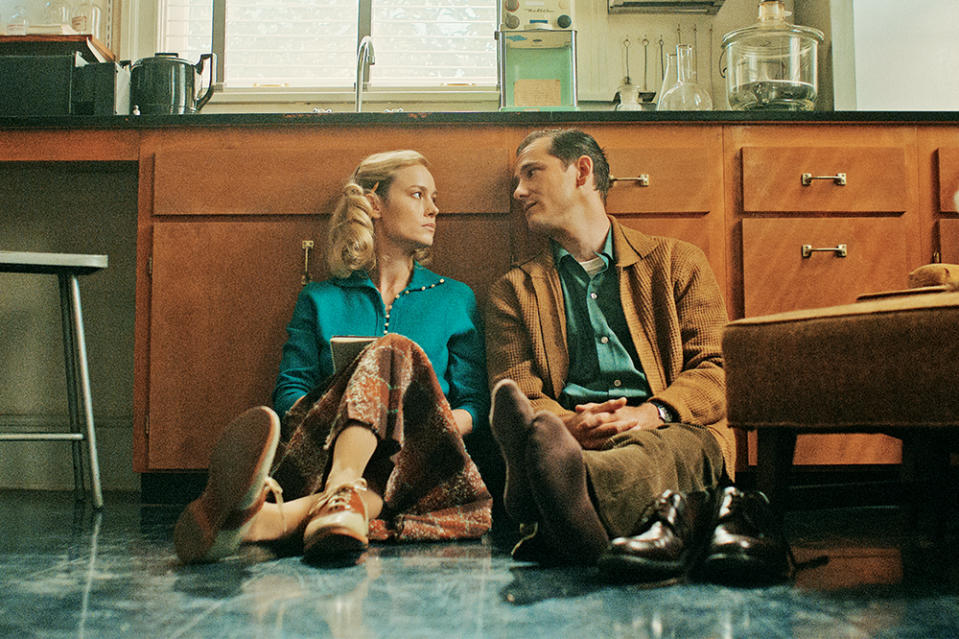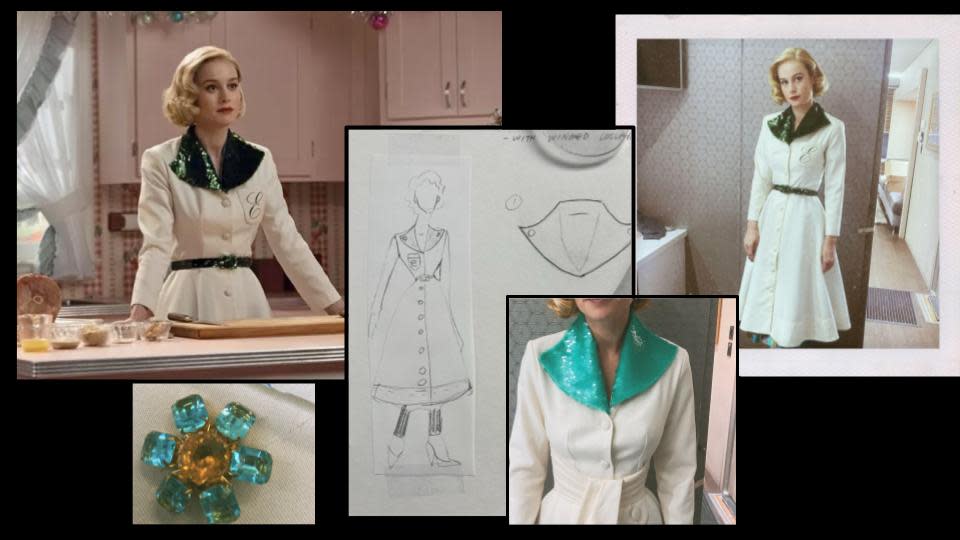‘Lessons in Chemistry’: How Lab Coats, a Piano Melody and Knitwear Built Brie Larson’s Character

Brie Larson’s Elizabeth Zott is a woman who doesn’t conform to society’s expectations. In AppleTV+’s “Lessons in Chemistry,” Larson plays a brilliant young woman who dreams of being a chemist in 1950s America, a time when society believed a woman’s place is in the home and not in a science lab. She eventually does make it into the Hastings Research Institute to realize her life’s ambition, despite her male colleagues dismissing her with comments about her need to smile more.
Although she remains, for the most part, button-downed and unemotional, there is an evolution of her character, albeit a subtle one. Thanks to a skilled team of artisans, Elizabeth’s journey as a woman who defied society’s rules is reflected in her wardrobe, makeup and the show’s music.
More from Variety
Costume designer Mirren Gordon-Crozier takes Elizabeth from lab technician to the cooking show host of “Supper at Six,” choosing dusty, muted tones for the character when she is in scientist mode. “I used teal, salmon pink and down-to-earth colors that had a certain brightness whenever light shone on them,” the costume designer says, noting she stayed away from using too much pink because Elizabeth isn’t a typical pastel-wearing woman.
While at the lab, Elizabeth falls in love with Calvin (Lewis Pullman), so Gordon-Crozier subtly softened her look a bit. “She starts wearing beige and cream colors. When she’s in Hastings, she wears this beautiful linen circle skirt and a cream top to show she cares more about her appearance.”

Yet, Elizabeth’s mind was always on work, and unlike other women of the era, she wasn’t one to care much to coordinate her shoes, bags and gloves, so Gordon-Crozier piecemealed
items together to reflect that. Often, she’d pick out warm fabrics, such as linens and twills, for Elizabeth’s wardrobe, saying, “Knitwear was really important because it added texture and depth to her costumes.”
As the show progresses, Gordon-Crozier also gets creative with Elizabeth’s lab coats. “She cooks in a lab coat because she considers an apron to be silly. The lab coat covers more surface areas, and it has pockets,” the designer says. “We started doing a couture situation where every episode is a different lab coat. She starts to have fun with it and isn’t so oppressed by her fashion.”
When audiences first see Elizabeth, it’s in a flash-forward as she goes to tape “Supper at Six,” wearing her “signature green,” which is her trademark color throughout the duration of the series.
Gordon-Crozier explains, “I wanted to make that color iconic from the beginning. I also made sure the back was interesting with buttons down the back, a V-neckline, and she’s wearing cigarette pants. She puts on her lab coat with matching royal green silk piping.”

Makeup head Miho Suzuki reflected that same journey with Elizabeth, explaining, “I took advantage of Brie’s natural look as much as possible. I hardly used any foundation so you could really see her texture more than anything.”
When Calvin dies, Suzuki allows Larson’s emotions and performance to shine, stripping back the look even further by using no makeup at all. And after Elizabeth becomes a mother, she adds in a little bit of eyeliner and a touch of foundation.
By the time Elizabeth becomes a TV show host, Suzuki found her makeup an interesting way to develop the character. “She’s thrown into this position and had no plans for that. She’s not interested in being the center of attention, but she’s receptive
to it,” Suzuki says. However, when Elizabeth gets TV makeover, the results are big hair, false eyelashes, blue eyeshadow and pink lipstick. “It’s really not who she is. It showcased this moment of how uncomfortable she is to be seen as that woman that people created. So, she decides, ‘If I’m going to do this, I’m going to look like myself.’”
With that, Elizabeth reverts to her lab coat and simple makeup — but slightly more than usual. It’s a look she feels comfortable enough with for her to be in front of the camera.
As for Elizabeth’s theme music, composer Carlos Rafael Rivera went through a process of trial and error. He worked closely with showrunner Sarah Adina Smith, first offering up a guitar, but Smith felt it didn’t feel right. He says, “The hardest thing to find was what the heart of the story was, and that turned out to be through Calvin.”
Rivera used Calvin as his jumping-off place to bring out Elizabeth’s humanity, explaining, “She’s a beautiful person, but you have to go through so many layers to reach who she is.” He used Calvin’s theme to reflect her feelings for him, and the melody could be heard any time she is around the character. The composer eventually landed on using a piano-centric score complemented by an orchestra and synthesizers. With the synths, he wanted to emulate the glass tubes of the science lab.
“There’s something that we all universally connect to when we hear a piano, that seems to work. But it’s not just a piano; it’s a vibraphone because of that time we’re in,” Rivera says. “You want to have an instrument that puts you in the place.”
Best of Variety
Sign up for Variety’s Newsletter. For the latest news, follow us on Facebook, Twitter, and Instagram.


